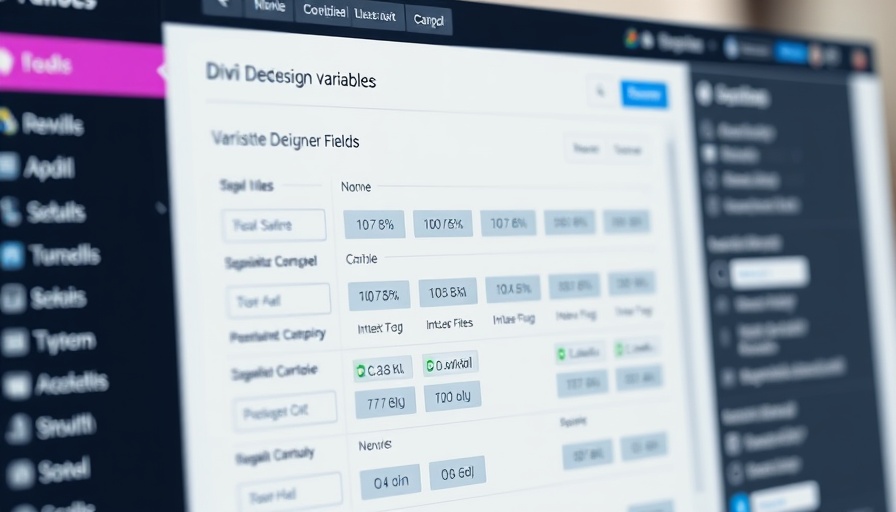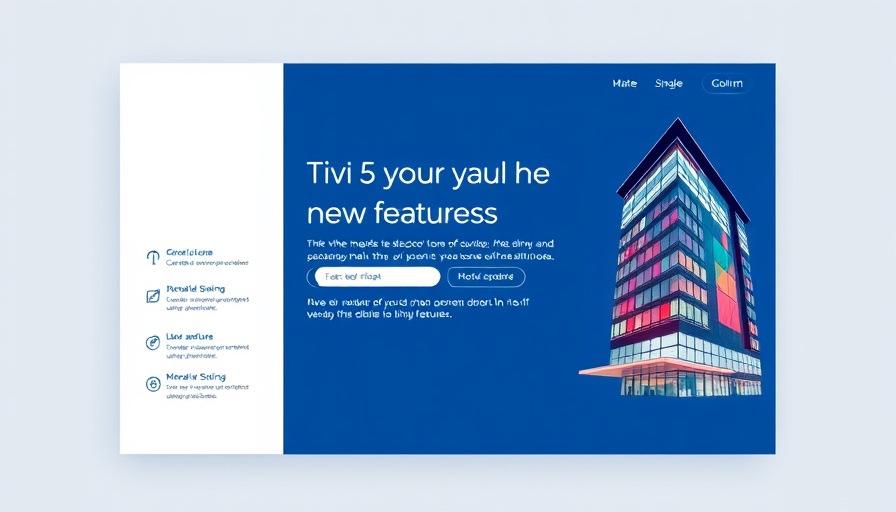
Understanding the Shift: ACF vs Divi Design Variables
In the realm of web design, two powerful tools have emerged as frontrunners for WordPress users: Advanced Custom Fields (ACF) and Divi Design Variables. Recent updates to Divi's framework have sparked a debate among users about the best approach to managing design and content. As a WordPress user, navigating these choices can be overwhelming. This article breaks down key differences between ACF and Divi Design Variables, helping you make an informed decision for crafting your webpages.
What Are Advanced Custom Fields (ACF)?
Advanced Custom Fields (ACF) is a well-known plugin in the WordPress community, providing users the ability to add custom fields to their posts, pages, and custom post types. With ACF, you can create a tailored content structure, ensuring that your site is as unique as your brand.
With a variety of field types, from text boxes to image uploads, ACF enables you to gather and manage data efficiently. It’s extremely beneficial when structuring complex layouts or when you wish to include specific data inputs from users without affecting the overall design integrity.
Introducing Divi Design Variables
On the other hand, Divi Design Variables bring a fresh outlook with an emphasis on consistency across your design elements. They allow users to define design values that can be reused throughout various modules, creating a cohesive look without redundancy. This new feature is especially appealing for users striving for efficiency, as it enables easy adjustments to design without diving into individual settings.
With Design Variables, changes made to your theme can ripple throughout the site, enhancing the user experience while reducing the need for multiple modifications. This could be a game-changer for WordPress users focused on streamlining their design processes.
When To Choose ACF or Divi Design Variables
So, which tool should you choose? The answer depends largely on your project requirements. If you are managing a site that requires extensive customization of data entry, ACF may be more suitable. It shines in environments where data structure is key, such as custom post types for portfolios, testimonials, or advanced user profiles.
Conversely, if your priority is to maintain design consistency and you are utilizing Divi for your layouts, Design Variables should be your go-to solution. This tool will save you time and enhance your site’s aesthetic appeal by ensuring that design changes can happen globally with minimal hassle.
Combining ACF and Divi Design Variables: Is It Possible?
The beauty of today’s WordPress landscape is that the integration of tools often leads to improved outcomes. You don’t have to choose strictly between the two; they can complement each other effectively. By using ACF for your data structure and Divi Design Variables for visual consistency, you can leverage the strengths of both while creating a site that is functional and beautiful.
This combination can be particularly powerful for businesses that require detailed information to be presented aesthetically. For instance, a restaurant website can benefit from ACF to gather menu item details and use Divi’s Design Variables to ensure the menu looks stunning yet uniform across the page.
Final Thoughts
The choice between using ACF and Divi Design Variables ultimately depends on your specific needs as a WordPress user. Both tools offer distinct advantages that can significantly impact how you build and manage your web presence. Understanding your end goal—whether it’s to customize data entry with ACF or to unify design with Divi’s Variables—will guide your decision. The key is to find the balance that works best for your project.
If you’re eager to learn more about how you can streamline your WordPress design process, try experimenting with both tools to see how they can work in tandem. The power of flexibility in WordPress architecture can lead to stunning, user-friendly websites.
 Add Row
Add Row  Add
Add 




 Add Row
Add Row  Add
Add 

Write A Comment